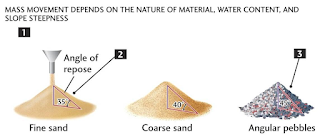ELIMINATION RATE CONSTANT
Ø For a drug that
follows one compartment kinetics and administered as rapid IV injection, the
decline in plasma drug concentration is only due to elimination of drug from
the body, the phase being called as elimination phase.
Ø Elimination
phase can be characterized by three parameters
o
Elimination
rate constant,
o
Elimination
half-life
o
Clearance.
Integration
of equation 3 yields
ln
X = ln Xo - KE t
------ 4
Where,
Xo = amount of drug at time t = o i.e. the initial amount of drug
injected.
Equation
4 can also be written in exponential form as:
X
= Xo e - KEt----- 5
It shows that disposition of drug that
follows one compartment kinetics is monoexponential.
Transforming equation 4 into common
logarithms (log base 10), we get:
log
X = log Xo - KE
t ------
6
Since
it is difficult to determine directly the amount of drug in the body X,
advantage is taken of the fact that a constant relationship exist between drug
concentration in plasma C (easily measurable) and X;
Thus, X = Vd C
------- 7
Where, Vd = proportionality constant
popularly known as apparent volume of distribution.
It is a pharmacokinetic parameter
that permits the use of plasma drug concentration in place of amount of drug in
the body.
The
equation 6 therefore becomes:
log
C = log Co - KE
t ------ 8
2.303
Ø Equation 8 is
that of a straight line and indicates that a semi logarithmic plot of log C
versus t will be linear with Y intercept log Co.
Ø The elimination
rate constant is directly obtained from slope of the line (figure 5 (b)). It
has units of min-1.
Thus a linear plot is
easier to handle mathematically than a curve which in this case will be
obtained from a plot of C versus t on regular (Cartesian) graph paper Figure.
Ø Thus, Co,
KE (and t1/2) can be readily obtained from log C versus t
graph.
Ø The elimination
or removal of the drug from the body is the sum of urinary excretion,
metabolism, biliary excretion, pulmonary excretion and other mechanisms
involved there in.
Ø Thus, KE
is an additive property of rate constants for each of these processes and
better called as overall elimination rate constant.
KE = Ke + Km + Kb
+ KP + ....
------ 9
Ø The fraction of
drug eliminated by a particular route can be evaluated if the number of rate
constants involved and their values are known. For example, if a drug is
eliminated by urinary excretion and metabolism only, then, the fraction of drug
excreted unchanged in urine Fe and fraction of drug metabolized Fm
can be given as:
Fe = Ke / KE-------
10a
Fm = Km / Ke ------
10b
ELIMINATION HALF-LIFE
Half-life
is related to elimination rate constant by the following equation:
t½ = 0.693/Ke------ 11
Most
of the drugs are eliminated within 10 half lives.
Ø Half-life is a
secondary parameter that depends upon the primary
parameters
clearance and apparent volume of distribution as
follows:
t½
= 0.693
………..11(a)
ClT




Comments
Post a Comment